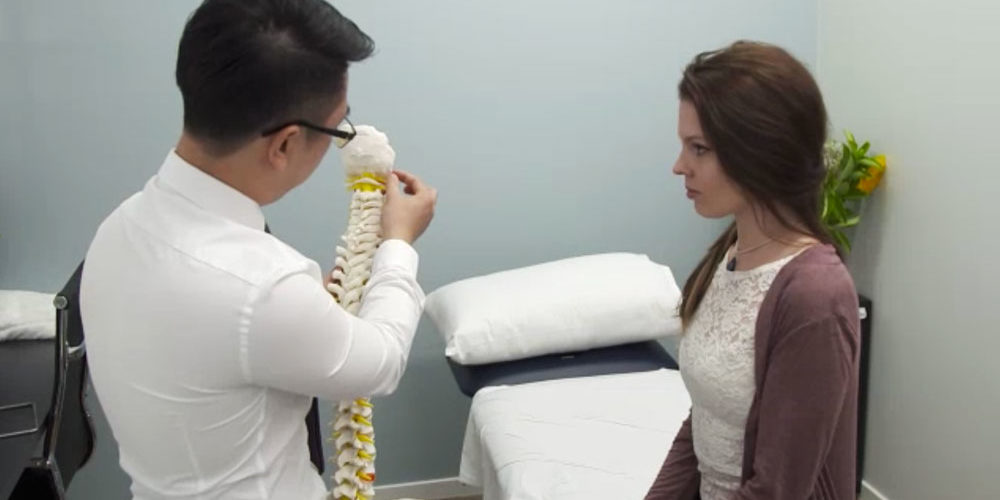Thoracic Outlet Syndrome
Thoracic Outlet Syndrome Treatment in Daisy Hill, North Lakes & Eight Mile Plains
Thoracic outlet syndrome refers to a group of conditions that develops when there is compression of the nerves, arteries, or veins in the passageway from the collarbone to the first rib called the thoracic outlet. Compression of these structures occurs when the thoracic outlet becomes too narrow which may lead to pain in the shoulders, neck, and arms as well as numbness and tingling in your hands. In most cases, the cause of thoracic outlet syndrome is not preventable; however, this painful condition is treatable at The Brisbane Spine Clinic.
It is interesting to note that a lot of inexperienced practitioners or doctors will misdiagnose this condition as a nerve compression from the neck vertebrae and treat accordingly, with very poor results and a waste of time. Thoracic outlet syndrome happens a lot more frequently than we think, and can be caused by a variety of instances, be it from direct or repetitive trauma such as a football scrum, an incorrect fast bowling technique in cricket, poor serving techniques in tennis or simply poor shoulder posture while sitting.


Common Symptoms
- Fatiguing or weakness of the hands, arms and upper limb
- Swelling of the arm
- Numbness or tingling in the arms and fingers
- Tender lump near your collarbone
Common Causes
- Anatomical Defects
- Poor Posture
- Injury
- Pregnancy
Symptoms of Thoracic Outlet Syndrome
The symptoms associated with thoracic outlet syndrome can vary depending on whether it is a nerve or blood vessel that has been affected.
Compressed blood vessels may lead to:
- Fatiguing or weakness of the hands, arms and upper limb
- Swelling of the arm
- Discoloration of the hand
- Cold hands or arms
- Numbness or tingling in the arms and fingers
- Tender lump near your collarbone
Compressed nerves may lead to:
- Pain in the neck, shoulder or hand
- Numbness or tingling in your arms and fingers
- Weakness of your grip
Causes of Thoracic Outlet Syndrome
The cause of a compression of the nerves or blood vessels in the thoracic outlet can vary, but typically is attributed to one or more of the following:
Anatomical Defects
Inherited defects present at birth. Some people are born with an extra rib located above the first rib (cervical rib) which has the ability to reduce the size of the thoracic outlet and cause a compression of the nerves or blood vessels.
Poor Posture
Poor posture causes undue pressure on the joints. Drooping shoulders, or sitting at a computer with your head extended forward for a long period of time can cause compression in the thoracic outlet.
Injury
Car accidents are known to cause a compression of the thoracic outlet due to the impact coupled with a seatbelt running very closely over this area.
Pregnancy
In the final stages of pregnancy, the body releases hormones to loosen the joints in the body which may lead to the first signs of thoracic outlet syndrome.
Diagnosis
At Brisbane Spine Clinic, our philosophy on how we treat patients is reflected in our care model – we are not here to provide a temporary patch up. We use a problem-solving, results-based, clinical approach to find the exact cause of this complex condition and achieve measurable long-term improvements to your symptoms.
During a thorough examination, we may order additional tests such as:
- An x-ray of the thoracic outlet to confirm whether you have an extra rib that may be causing the compression.
- An MRI to create clear, detailed images of the thoracic outlet. The pictures allow us to determine the exact location and cause of the compression so we can target out treatment effectively.
Thoracic Outlet Syndrome Treatment in Daisy Hill
We believe in supporting and providing the best possible care to our patients. We understand thoracic outlet syndrome can be painful and frustrating which is why we are committed to a problem-solving, results-based clinical approach to get to the root of your condition and achieve measurable improvements. We do not stop at treating to just resolve the current symptoms, but we go deeper into the root of this problem by identifying all possible existing risk factors (such as but not limited to, stiff mid thoracic vertebrae, poor shoulder blade muscle coordination, collarbone joint dysfunction, shoulder rotator cuff muscle imbalance etc.). We understand prevention is the best treatment and we will do all we can to resolve all the possible risk factors to prevent thoracic outlet syndrome recurring.
We offer non-invasive and nonsurgical physiotherapy treatment options to relieve the pain and symptoms brought on by thoracic outlet syndrome.
Initial treatment options involving physical therapy may help to strengthen and stretch the shoulder muscles to improve range of motion as well as improve your posture. By strengthening the muscles, it will provide support for the collarbone and surrounding muscles. Physical therapy techniques may also take the pressure off the compressed nerves and blood vessels.
Request an appointment
More services
Spinal Consultant


Mr Leo Hyun
- B.Phty UQ
- Rehabilitation and injury prevention
- Sporting injury management
- Return-to-work rehabilitation
- Management and prevention of arthritis and other conditions
Why choose our clinic
From the moment you book in for your consultation till the completion of your spinal treatments, you will realise The Brisbane Spine Clinic difference.
- Peace of mind
- Trust
- Clear communication
- Dedication and commitment
- Highest level of care
- Problem-solving approach
- Second opinions
- Non-invasive treatment
